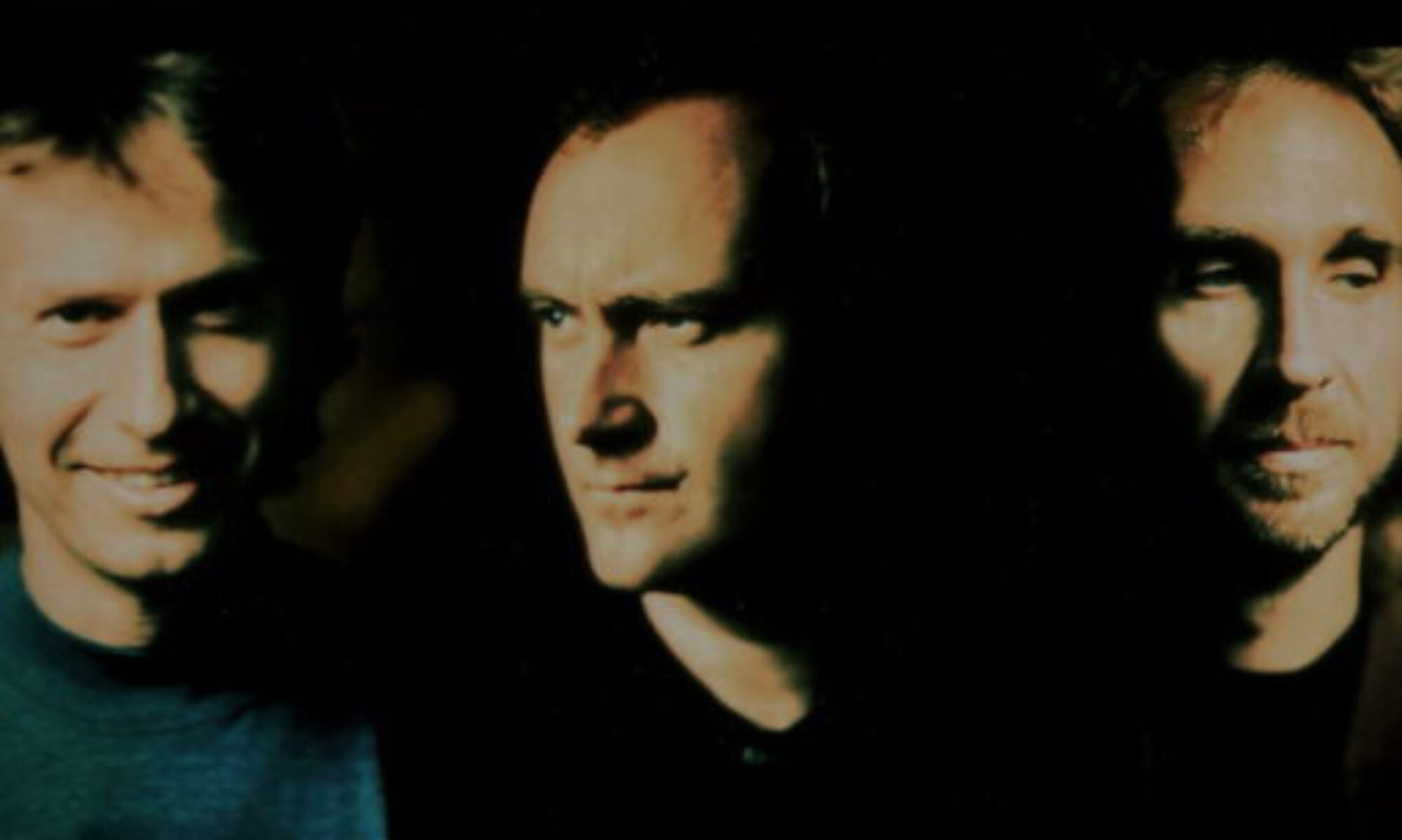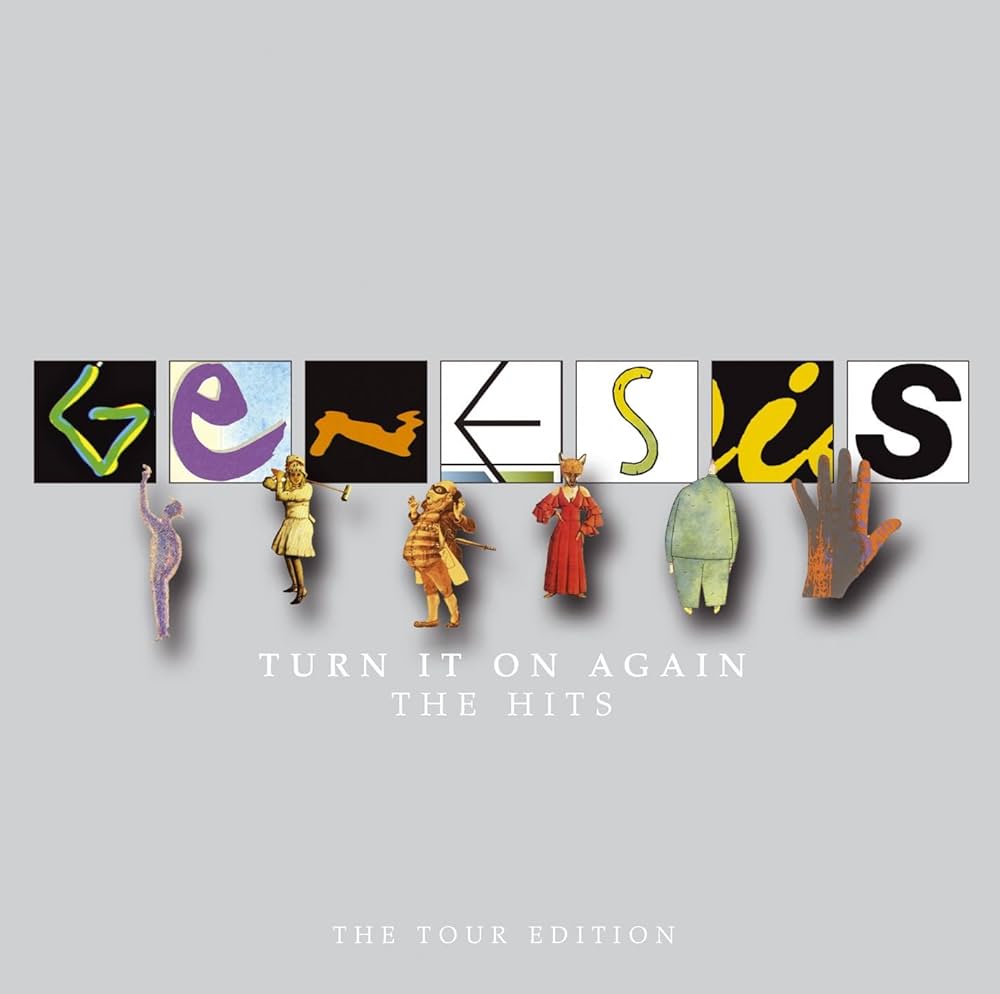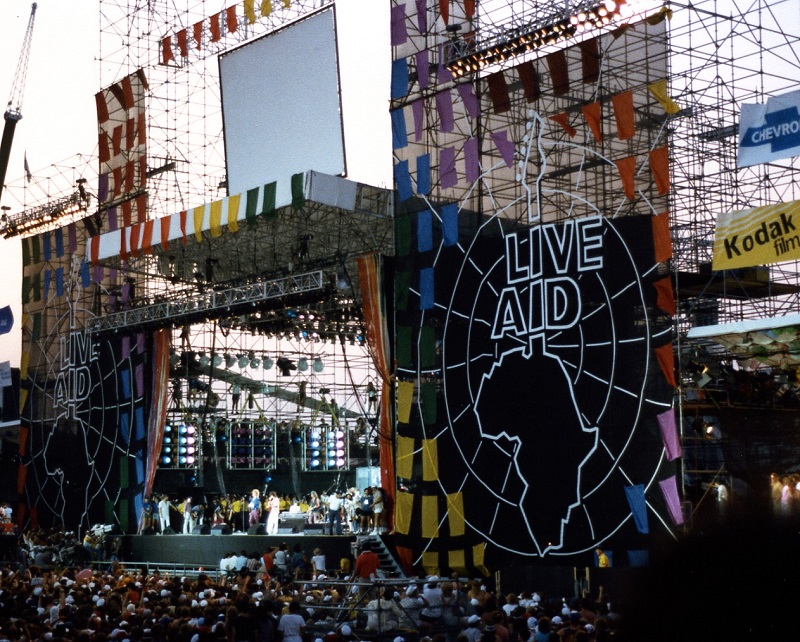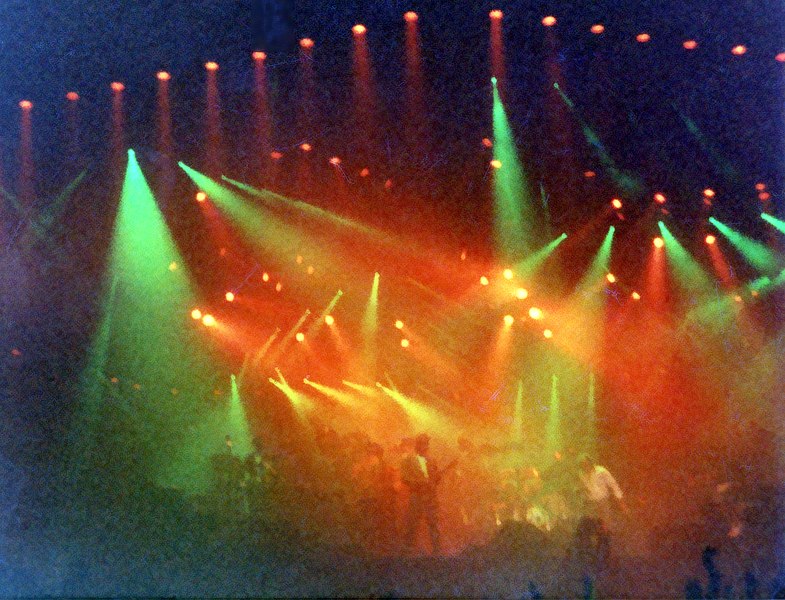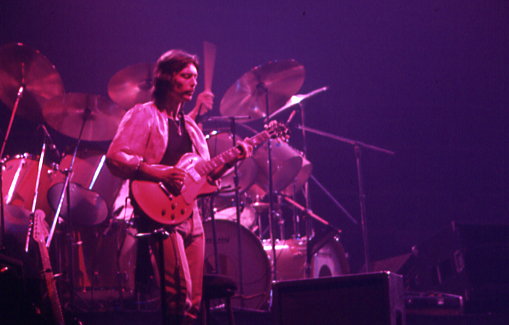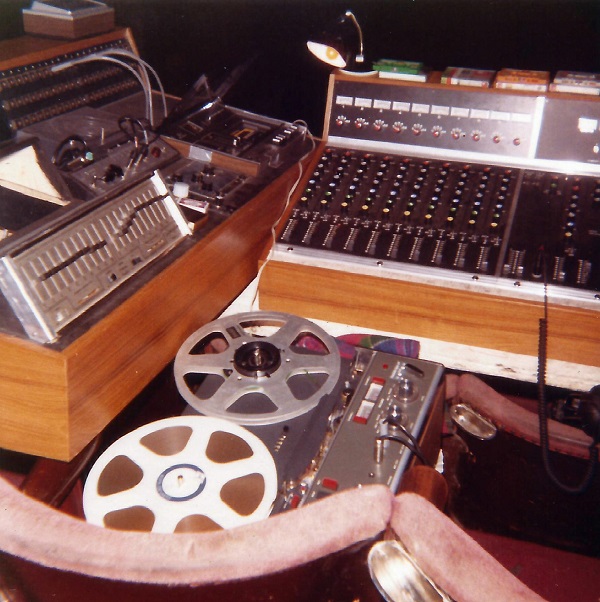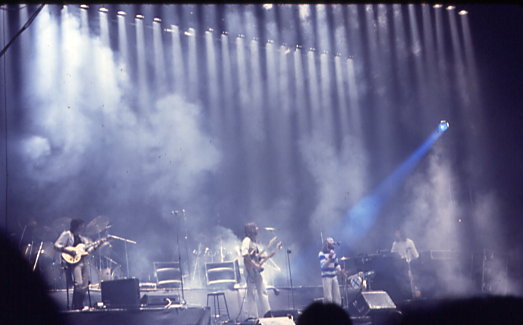On November 7, 2006, Genesis fans received long-awaited news during a press conference at the May Fair Hotel in London. Tony Banks, Phil Collins, and Mike Rutherford—the trio that had propelled Genesis to global stardom—announced their reunion for the Turn It On Again tour, set for 2007. It marked the first time in 14 years that Collins, who had stepped away in 1996, would join his bandmates on stage. Chester Thompson and Daryl Stuermer, long-standing touring members, were also set to return, cementing a lineup familiar to fans of the group’s 1980s and 1990s peak.
Continue reading “November 7, 2006: Genesis reunite for the ‘Turn It On Again’ Tour 2007”Live Aid, July 13, 1985: Phil Collins Performs in Both London and Philadelphia
On July 13, 1985, Phil Collins made music history by doing something no one had ever done before (and likely hasn’t done since). He was the only performer to appear live at both Live Aid concerts, in London and Philadelphia, on the very same day.
Phil Collins: Everywhere at Once
By the mid-1980s, Phil Collins had become a global phenomenon. As both a solo artist and member of Genesis, he had racked up chart-topping albums, hit singles, and sold-out tours across the world. His third solo album, No Jacket Required, had taken 1985 by storm, dominating airwaves and topping the charts in multiple countries.
So it was only fitting that on July 13, 1985, a day described as “the greatest day in the history of pop music”, Phil Collins would also be everywhere — quite literally.
Making Rock History
Collins pulled off what seemed impossible: he performed live on global television from two different continents in a single day. And it was not for fame or headlines, it was for a cause. Live Aid, organized by Bob Geldof, aimed to raise funds for famine relief in Ethiopia. Like the Band Aid single “Do They Know It’s Christmas?” the year before, the event brought together some of the biggest names in music for one shared purpose.
While many artists participated, the day belonged to Phil Collins.
Live Aid: The Event
Live Aid was the natural successor to Band Aid. Geldof had rallied the stars once again, this time for two simultaneous mega-concerts, one at Wembley Stadium in London, the other at John F. Kennedy Stadium in Philadelphia. Almost every major pop and rock act of the 1980s took part.
Collins had previously played drums on the Band Aid single, but didn’t sing on it. His record label had advised him to hold off singing publicly, so as not to distract from the release of No Jacket Required and its upcoming tour. That changed with Live Aid.
July 13: A Day to Remember
Collins began his day at Wembley Stadium in London. In the early afternoon, under a blazing sun, he sat alone at the piano and performed “Against All Odds” and “In the Air Tonight”.
‘lt was blisteringly hot, the white stage. lt was so hot and l made a terrible mistake on ‘Against All Odds’ on the piano’, Phil later recalled. ‘l thought, ‘Oh God, what a good start for the day this is.”1
The bum note was heard not only by the 80,000 people at Wembley, but by over 1 billion viewers watching around the world.
He was then joined by his friend Sting for a duet of “Long Long Way to Go”, a track from No Jacket Required (Sting had sung backing vocals on the original), followed by a performance of “Every Breath You Take”.
From London to Philadelphia
Collins left Wembley, jumped on a Concorde, and flew across the Atlantic to perform at the Philadelphia show just a few hours later. He recreated his solo set and also played drums for both Eric Clapton and the reunited Led Zeppelin.
He arrived at JFK Stadium at around 7:00 p.m., asked Eric Clapton what they’d be playing, and by 7:30 p.m., he was onstage with him. Somewhere in between, he even found time to visit Robert Plant’s trailer for a quick chat before their Led Zeppelin set.
It was a whirlwind. But it perfectly captured the tireless energy of Phil Collins in the 1980s.
The Legacy
By 1985, Collins was already a global star. But performing at both Live Aid concerts catapulted him even further, cementing his status as a worldwide icon and consummate showman. His double appearance was not only a technical and logistical feat, but a powerful symbol of the unity and urgency behind Live Aid’s mission.
Live Aid: In Hindsight
While Live Aid is remembered for its good intentions, it’s also seen — in retrospect — as a bit of a cliché: wealthy Western musicians trying to “save” Africa with rock music. The lyrics of Do They Know It’s Christmas? have been criticized for their colonial tone and stereotypes. Still, the event did raise enormous funds and global awareness for the crisis in Ethiopia.
Phil Collins didn’t just participate in the day, he helped define the moment. His double appearance remains one of the most talked-about achievements of Live Aid, and one of the most iconic performances in rock history.
Title photo: Live Aid at JFK Stadium, Philadelphia, PA. Source: Wikimedia Commons, own work. Author: Squelle. / CC-BY-SA-2.5 (https://creativecommons.org/licenses/by/3.0).
- Phil Collins – A Life Less Ordinary (Documentary – 2002) ↩︎
The End of the Invisible Touch Tour – Wembley, July 4, 1987
On July 4, 1987, Genesis wrapped up their massive Invisible Touch tour with the fourth consecutive sold-out show at Wembley Stadium. It marked the end of a historic run for the band and a high point in their live career.
Invisible Touch: The Album
Released in 1986, Invisible Touch became Genesis’ most commercially successful album, reaching #1 in the UK and #3 in the US. It produced five major hit singles: ‘Invisible Touch’, ‘Tonight Tonight Tonight’, ‘Land of Confusion’, ‘In Too Deep’ and ‘Throwing It All Away’. Tracks like the title song, the moody Tonight, Tonight, Tonight, and Land of Confusion with its iconic Spitting Image video dominated radio, MTV, and the charts throughout 1986 and 1987. Genesis had never been more visible – or more popular.
Naturally, the band embarked on a massive world tour, playing across North America, Australia, Japan, Europe, and finally closing with four sold-out nights at Wembley, playing to nearly 300,000 people.
The Invisible Touch Tour
The tour kicked off in September 1986 in the US and included 112 shows, selling close to two million tickets. The band was joined, as usual, by drummer Chester Thompson and guitarist/bassist Daryl Stuermer.
In Australia and New Zealand, Genesis added a local four-piece string section for In Too Deep and Your Own Special Way, due to union regulations requiring them to employ local musicians.
By this point, Genesis weren’t just a hit-making machine, they were a finely-tuned live band, backed by a state-of-the-art Vari-Lite lighting system and a tight, polished setlist. While they had a vast catalogue to choose from, the shows leaned heavily on songs from Invisible Touch and recent albums.
The Setlist and Show Highlights
Every show opened with Mama, though its eerie atmosphere did not always translate well in daylight stadium settings. The closer was the now-iconic Turn It On Again medley, which featured a whirlwind of rock classics: Everybody Needs Somebody to Love, Satisfaction, Twist and Shout, Pinball Wizard, All Day and All of the Night and Karma Chameleon.
Older fan favorites included: Los Endos, Home By The Sea (with its now-standard ghost-story intro) and the In The Cage medley.
At the beginning of the tour, the In the Cage medley included In That Quiet Earth and the second half of Supper’s Ready. But as the tour progressed, Phil Collins began having trouble hitting some of the higher notes in Supper’s Ready, and the band eventually returned to the familiar In That Quiet Earth / Afterglow ending.
New material from Invisible Touch featured heavily, with standout performances of: Domino (with Phil’s now-legendary audience interaction), Tonight, Tonight, Tonight, Throwing It All Away (where the crowd singalong grew with each night) and Invisible Touch.
Live at Wembley Stadium
‘Nearly 300,000 people at Wembley. OK, there might have been a few repeats in there, but I thought at the time, and I still think now, that moment was the peak of our career’1 – Tony Banks.
By the time Genesis arrived at Wembley, the band had performed the set so often it had become a masterclass in musicianship and stagecraft. Initially, only two nights at Wembley were planned, but due to overwhelming demand, two more were added, making Genesis the first band to play four sold-out shows at Wembley Stadium. They entered the Guinness Book of Records, a record later broken by Michael Jackson during his Bad tour in 1988.
The Wembley concerts were filmed and later released on VHS and DVD (2003). Unfortunately, the epic In the Cage medley did not make it into the final release, (allegedly) due to bad luck with tape changes during that very song on each night.
Even so, the performance captured at Wembley is phenomenal, showcasing Genesis at their live peak. With Invisible Touch, the band had reached global superstardom and Wembley was the victory lap.
After this triumph, fans would have to wait four more years for the next Genesis studio album.
Title photo: Genesis Nancy 1987. Phil Collins, Tony Banks, Mike Rutherford, Daryl Stuermer, Chester Thompson. Genesis en concert à Nancy le 14 juin 1987 au stade Marcel-Picot de Nancy-Tomblaine Source: Wikimedia Commons, Fredamas / CC-BY-SA-2.5 (https://creativecommons.org/licenses/by/3.0).
- in Banks, Tony; Collins, Phil; Gabriel, Peter; Hackett, Steve; Rutherford, Mike; Dodd, Philip, Genesis. Chapter & verse. (New York: Thomas Dunne Books/St. Martin’s Griffin, 2007), p. 287. ↩︎
Steve Hackett’s Last Show with Genesis
On July 3, 1977, Genesis played the final show of their Wind & Wuthering tour, unaware that it would also be Steve Hackett’s last performance with the band.
Wind & Wuthering and Growing Tensions
Released in December 1976, Wind & Wuthering was Genesis’s second album following Peter Gabriel’s departure. With Phil Collins now stepping confidently into the role of lead vocalist, the band had successfully reinvented itself as a four-piece. Collins had already proven he could carry the frontman role with A Trick of the Tail and the subsequent 1976 tour.
By this point, songwriting duties were largely shared between Tony Banks and Mike Rutherford, while Phil focused more on arrangements and performance. Steve Hackett, however, was growing increasingly frustrated. He felt that his musical ideas were often overlooked, and after the 1977 tour, he made the decision to leave Genesis.
The Wind & Wuthering Tour
The 1977 tour was one of Genesis’s biggest yet, taking them across Europe, the US, and for the first time, South America. They were joined by American drummer Chester Thompson, who would become a fixture in the live lineup for decades.
That year, the band reached new heights in live performance and was even voted “Best Live Group” in 1977. Much of that era’s power was captured on the double live album Seconds Out.
The Final Show: July 3, 1977, Munich
Genesis closed out the tour with a concert at Munich’s Olympiahalle. They opened with Squonk, followed by One for the Vine, a Tony Banks epic from the new album. The rare track Inside and Out from the Spot the Pigeon EP was also included, having appeared on select European dates.
Highlights of the show included The Carpet Crawlers, I Know What I Like, and Supper’s Ready, songs that had evolved significantly since Gabriel’s departure. The band had also begun experimenting with medleys, a trend that continued on this tour: Dance on a Volcano merged seamlessly into Los Endos, while The Lamb Lies Down on Broadway was paired with the climactic ending of The Musical Box.
And of course, Firth of Fifth made the setlist, featuring Hackett’s iconic guitar solo. None of the fans, or even the band members, knew it would be the last time they’d see Steve Hackett perform it live with Genesis.
Steve Hackett’s Departure
Steve had already released a solo album by this point, showcasing ideas that had not made it onto Genesis records. During the four-piece era, he had pushed for a guaranteed portion of writing credits on each album, a request the others declined, committed as they were to being a fully democratic group.
In July 1977, while mixing Seconds Out, Hackett found himself exhausted by the constant repetition of songs like I Know What I Like. After months on the road and in front of crowds of 20,000 people, he began to feel creatively stifled. The challenge was gone.
So one day, he picked up the phone and called Mike Rutherford to say he was leaving. Mike, aware of Steve’s growing dissatisfaction, did not try to change his mind.
Shortly afterward, Phil Collins happened to drive past Steve near Trident Studios, where they were mixing the album. Phil invited him into the car, but Steve acted strangely, saying only, “Talk to Mike, he’ll explain,” before walking away. When Phil arrived at the studio, Mike and Tony told him Steve had officially left the band.
The Band Carries On
Genesis continued mixing Seconds Out as a trio, then returned to the studio to begin work on their next album. From this point forward, Genesis would remain a three-piece studio band, while Steve Hackett would embark on a successful solo career.
Title photo: Genesis Steve Hackett. Source: Wikimedia Commons, Jean-Luc / CC-BY-SA-2.5 (https://creativecommons.org/licenses/by/3.0). Originally posted to Flickr as Genesis.
Live at the Roundhouse 1970
On March 11, 1970, Genesis played one of the most significant gigs of their early career at the Atomic Sunrise Festival at London’s legendary Roundhouse. The event, sponsored by Yoko Ono, featured artists such as David Bowie and Hawkwind. Just weeks later, Genesis signed their first major record deal with Charisma Records.
Genesis in Early 1970
At the start of 1970, Genesis were busy writing and rehearsing new material for their second album. Their debut album had failed to chart, and they had parted ways with producer Jonathan King and Decca Records. Determined to take a new direction, the band moved away from the pop-oriented style of their first record and embraced a more adventurous, experimental sound. At the time, Genesis consisted of: Peter Gabriel (vocals), Tony Banks (keyboards), Ant Phillips (lead guitar), Mike Rutherford (guitar and bass) and John Mayhew (drums).
Opening for David Bowie at the Roundhouse
Still an unknown band, Genesis saw the Atomic Sunrise Festival as a huge opportunity – especially since they were set to open for David Bowie.
Both Tony Banks and Peter Gabriel were big Bowie fans. Space Oddity had been released the previous year, and Bowie was already a rising star. His live shows at the time were highly theatrical, something that fascinated Gabriel. A few years later, Genesis would gain recognition for their elaborate stage performances, partly inspired by Bowie’s dramatic approach.
However, not everyone in the band was equally enthusiastic. While Gabriel was impressed by Bowie’s visuals, Banks felt that the theatrical elements took too much attention away from the music. This difference in perspective would later lead to tensions within Genesis, especially as Gabriel began incorporating costumes and masks into their own performances – something that divided opinions among the band.
The Atomic Sunrise Festival and Yoko Ono’s Involvement
At the Atomic Sunrise Festival, Genesis performed songs that would later appear on their second album, Trespass, including “Looking for Someone” and “The Knife” – both of which were captured in surviving video footage. It is also believed that they played “Twilight Alehouse”. In later interviews, Ant Phillips joked that this footage is the only visual proof that he ever performed with Genesis.
Despite the significance of the gig, the band’s experience was not entirely positive. Gabriel recalled that there were more people on stage than in the audience, and Phillips was so nervous that he could barely play – a stage fright that would later contribute to his decision to leave Genesis.
Still, both Banks and Phillips were impressed by the professionalism behind the scenes. Every performance at the festival was recorded on 8-track equipment, and parts of it were filmed. Since the event was backed by Yoko Ono, there’s a possibility that the full footage still exists somewhere in the Apple Records archives.
A few weeks after the show, Genesis signed with Charisma Records, and by the end of the year, they released Trespass. But changes were already on the horizon – Ant Phillips left the band, and a new drummer joined in the summer of 1970… but that’s a story for another time.
Title photo: Genesis mixing desk 2 – Revox A77 and associated gear for Genesis at a concert in the Liverpool Empire, 1970s, precise year unknown. Source: Wikimedia Commons, Rodhullandemu / CC-BY-SA-2.5 (https://creativecommons.org/licenses/by/3.0).
Genesis Kicks Off the Wind & Wuthering Tour at the Rainbow Theatre on 1 January 1977
On January 1, 1977, Genesis began their highly anticipated Wind & Wuthering tour with a series of three sold-out performances at London’s iconic Rainbow Theatre. These shows marked the beginning of a new chapter for the band, being the first with Chester Thompson as their touring drummer and the last with guitarist Steve Hackett. The stakes were high, and the performances lived up to every expectation, setting the tone for what would become one of the band’s most ambitious tours.
A New Era for Genesis
By the time Genesis took to the stage at the Rainbow, they were riding the wave of their recently released album, Wind & Wuthering. This was their second studio effort since Peter Gabriel’s departure and demonstrated the band’s evolving sound, shaped primarily by Tony Banks and Mike Rutherford. While Phil Collins had already proven himself a formidable frontman on A Trick of the Tail and its subsequent tour, Wind & Wuthering solidified the band’s status as a dominant force in progressive rock.
The Rainbow shows also introduced fans to a new dynamic on stage. Chester Thompson, who had played with Frank Zappa and Weather Report, stepped into the role of live drummer. Despite having just ten days of rehearsals to learn an extensive and complex setlist, Thompson impressed with his technical prowess and adaptability. Though initial reviews were mixed—with some critics finding his style less “exciting” than Bill Bruford’s—his chemistry with Collins and the band grew stronger as the tour progressed.
The Opening Night: 1 January 1977
Genesis opened their first show with “Eleventh Earl of Mar” from the new album, setting the stage with energy and precision. Fans were also treated to other Wind & Wuthering tracks, including the jazzy instrumental “…In That Quiet Earth” and the poignant ballad “Afterglow,” where Collins and Thompson recreated a stunning drum fill inspired by Zappa’s Roxy & Elsewhere. The setlist also revisited classic fan favorites like “Supper’s Ready” and “The Musical Box,” which now had a fresh groove thanks to Thompson’s jazz-rock sensibilities.
The performances weren’t just about the music. Genesis debuted a state-of-the-art stage setup, featuring computer-controlled laser lights and Boeing 747 landing lights, creating a mesmerizing visual spectacle. Despite the rise of punk rock, which critics claimed was overshadowing progressive rock, the demand for Genesis was undeniable—80,000 fans applied for just 8,000 tickets to the Rainbow shows.
Reflections on the Show
Peter Gabriel, who attended the Rainbow performances, reportedly sympathized with Thompson’s challenge of adapting to Genesis’ intricate material on short notice. However, the drummer’s confidence and skill became evident as he added his own flair to the band’s repertoire. Even tracks like “Squonk,” which some felt fell short compared to its studio version, showcased Thompson’s steady hand and growing familiarity with the material.
The new lineup’s energy was palpable. Tony Banks’ epic “One for the Vine” stood shoulder to shoulder with Genesis’ older masterpieces, while lighter moments like “All in a Mouse’s Night” brought humor to the set. The extended version of “I Know What I Like” had the audience grooving, proving that Genesis was still evolving their sound even in live performances.
A Turning Point for Genesis
The three nights at the Rainbow Theatre were a triumphant start to a journey that would take the band across Europe, North America, and South America. It was during this tour that Genesis cemented their reputation as one of the best live acts of the era, a feat recognized when they were voted “Best Live Group” in 1977.
Yet, this tour also marked an ending. Steve Hackett, whose frustrations over his role in the band had been simmering for some time, left after the tour. His departure would transform Genesis into a trio for their subsequent album, …And Then There Were Three…, signaling the end of their progressive rock era and the start of a new phase in their sound.
“Best Live Band” in 1977
The recordings from this tour were later featured on the live album Seconds Out. These concerts captured Genesis at a pivotal moment, balancing the old and the new while navigating internal changes and external pressures. For the fans lucky enough to be there, the Rainbow shows remain legendary—a testament to Genesis’ ability to innovate, adapt, and deliver unforgettable live experiences.
As Chester Thompson would later recall the Rainbow shows: “I remember there was an energy, a buzz unlike anything I felt. It wasn’t a huge venue, but the crowd was really into it. The music for me was again a challenge, because it was just so unfamiliar to me.”1
Indeed, the Rainbow shows of January 1977 were more than just concerts—they were a defining moment in the history of Genesis.
Title photo: Genesis_(the_band). Source: Wikimedia Commons, Jean-Luc / CC-BY-SA-2.5 (https://creativecommons.org/licenses/by/3.0).
Sources
Bowler, Dave; Dray, Bryan (1992): Genesis. A biography. London: Sidgwick & Jackson.
CHESTER THOMPSON FULL INTERVIEW : HOW HE WENT FROM ZAPPA TO DRUMMING WITH GENESIS & PHIL COLLINS.
Frischvers, Richard, ‘Wind & Wuthering’. Circus (31 March 1977), pp. 58–60, https://thegenesisarchive.co.uk/circus-magazine-wind-and-wuthering-feature-31st-march/, archived from the original on 11 October 2015.
Platts, Robin (2007): Genesis. Behind the lines, 1967-2007. Burlington, Ont., Canada: Collectors Guide Pub.
Thompson, Dave (2005): Turn it on again. Peter Gabriel, Phil Collins & Genesis. San Francisco: Backbeat Books.
- CHESTER THOMPSON FULL INTERVIEW : HOW HE WENT FROM ZAPPA TO DRUMMING WITH GENESIS & PHIL COLLINS. ↩︎
